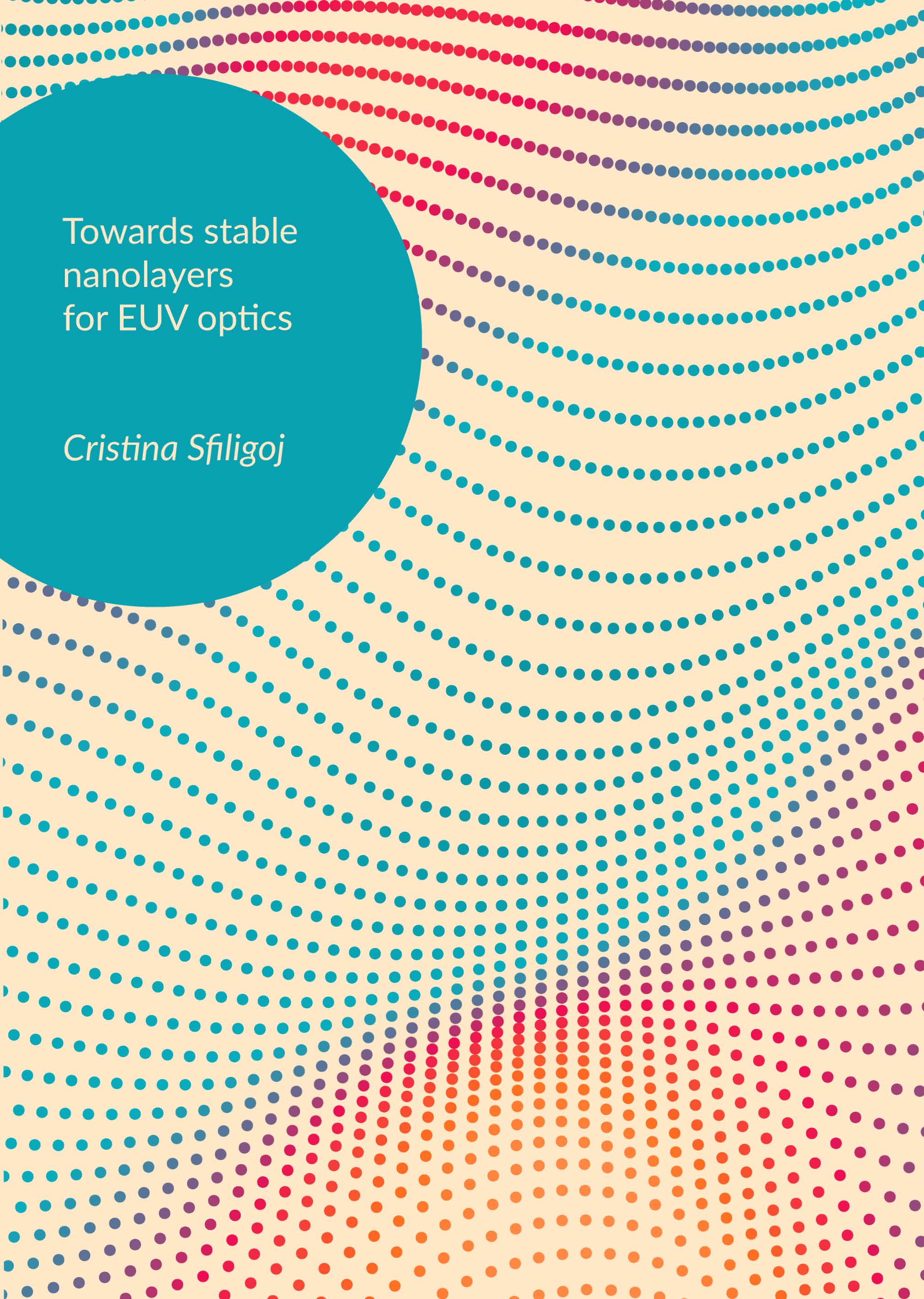Towards stable nanolayers for EUV optics
Nanolayers are two-dimensional architectures that, while providing an attractive platform to explore new physics, also play an essential role in technological innovations, resulting in an interest that spans from fundamental research to industrial applications. The exponential increase in computing power that defines our times is a direct result of the device miniaturization enabled by the progress in fabrication techniques and the development of new materials for the nanolayers.
In this thesis, we focus on nanolayers to be used as coatings for Extreme Ultraviolet (EUV) optics in present- and next-generation photo-lithography, a key technology in the semiconductor industry. Our goal is to improve the efficiency and durability of EUV mirrors and pellicles, following three approaches to increase their thermodynamic stability. We begin by systematically investigating possible additives to the multilayers in Mo/Si mirrors that can reduce chemical intermixing and lead to an enhancement of the EUV reflectivity and multilayer lifetime. We then explore how the deposition conditions influence the initial structure of sputtered Ru thin films and the effect of that on their tendency to dewet the substrate on which they reside. Finally, we present a novel combined setup consisting of a multi-beam optical stress sensor and a home-built scanning tunnelling microscope, for simultaneous stress monitoring and surface imaging during film deposition. This system enables to directly correlate the key atomistic events of film growth to changes in substrate bending, thus providing the opportunity to shine more light on the origin of stress.









